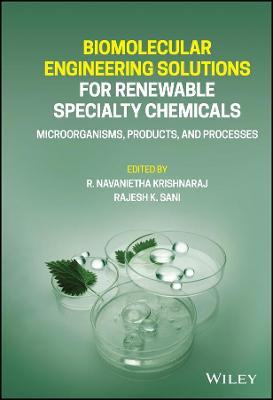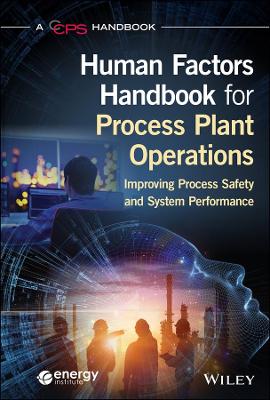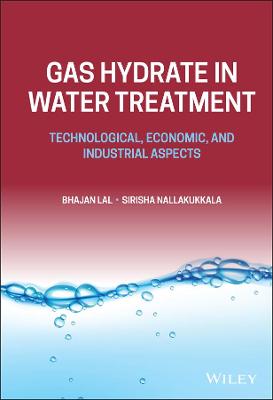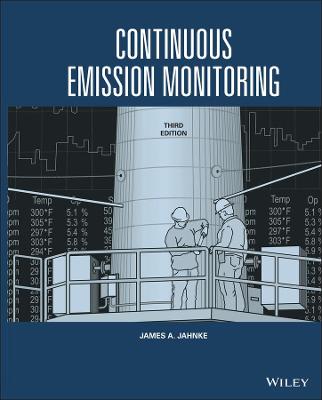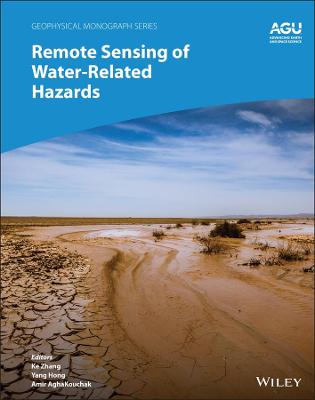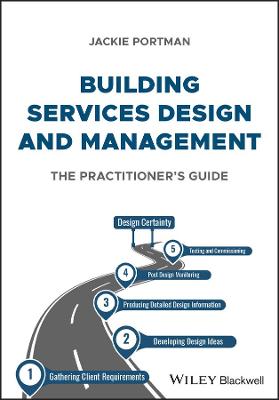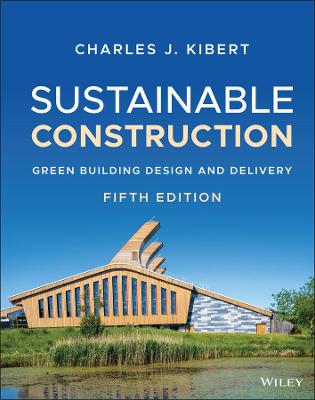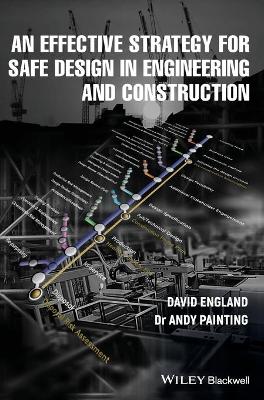Sustainable Engineering
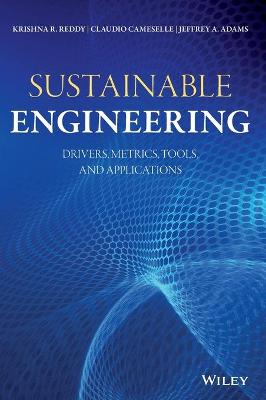 -15%
portes grátis
-15%
portes grátis
Sustainable Engineering
Drivers, Metrics, Tools, and Applications
Adams, Jeffrey A.; Cameselle, Claudio; Reddy, Krishna R.
John Wiley & Sons Inc
06/2019
544
Dura
Inglês
9781119493938
15 a 20 dias
1262
Section I Drivers, Environmental, Economic and Social Impacts, and Resiliency 1
1 Emerging Challenges, Sustainability, and Sustainable Engineering 3
1.1 Introduction 3
1.2 Emerging Challenges 3
1.2.1 Increased Consumption and Depletion of Natural Resources 3
1.2.2 Growing Environmental Pollution 6
1.2.3 Increasing Population 7
1.2.4 Increasing Waste Generation 8
1.2.5 Increasing Greenhouse Gas Emissions 10
1.2.6 Decline of Ecosystems 13
1.2.7 Loss of Biodiversity 13
1.2.8 Social Injustice 14
1.2.9 Urban Sprawl 16
1.3 The Master Equation or IPAT Equation 17
1.4 What Is Sustainability? 17
1.5 What Is Sustainable Engineering? 21
1.6 Summary 25
1.7 Questions 26
References 26
2 Environmental Concerns 31
2.1 Introduction 31
2.2 Global Warming and Climate Change 32
2.3 Desertification 40
2.4 Deforestation 40
2.5 Loss of Habitat and Biodiversity 41
2.6 Ozone Layer Depletion 43
2.7 Air Pollution 44
2.8 Smog 46
2.9 Acid Rain 47
2.10 Water Usage and Pollution 48
2.11 Eutrophication 51
2.12 Salinity 52
2.13 Wastes and Disposal 52
2.14 Land Contamination 59
2.15 Visibility 60
2.16 Odors 60
2.17 Aesthetic Degradation 61
2.18 Land Use Patterns 61
2.19 Thermal Pollution 61
2.20 Noise Pollution 62
2.21 Summary 62
2.22 Questions 63
References 64
3 Social, Economic, and Legal Issues 69
3.1 Introduction 69
3.2 Social Issues 69
3.2.1 Society 69
3.2.2 Developed and Developing Societies 70
3.2.3 Social Sustainability Concept 71
3.2.4 Social Indicators 72
3.2.5 Social Impact Assessment 73
3.2.6 Social Sustainability Implementation 77
3.3 Economic Issues 77
3.3.1 Economic Assessment Framework 78
3.3.2 Life Cycle Costing 79
3.3.3 True-cost Accounting 79
3.4 Legal Issues 80
3.5 Summary 81
3.6 Questions 81
References 82
4 Availability and Depletion of Natural Resources 85
4.1 Introduction 85
4.2 Types and Availability of Resources 85
4.2.1 Fossil Fuels 85
4.2.2 Radioactive Fuels 87
4.2.3 Mineral Resources 88
4.2.4 Water Resources 89
4.2.5 Other Elemental Cycles 91
4.3 Resource Depletion 94
4.3.1 Causes of Resource Depletion 95
4.3.2 Effects of Resource Depletion 95
4.3.3 Overshooting 98
4.3.4 Urban Metabolism 98
4.4 Summary 99
4.5 Questions 100
References 101
5 Disaster Resiliency 103
5.1 Introduction 103
5.2 Climate Change and Extreme Events 104
5.3 Impacts of Extreme Events 105
5.3.1 The 2012 Hurricane Sandy in New York City 105
5.3.2 The 2016 Chile's Wildfires by Drought and Record Heat 106
5.3.3 The 2017Worst South Asian Monsoon Floods 106
5.4 What Is Resiliency? 106
5.5 Initiatives and Policies on Resiliency 109
5.6 Resiliency Framework 112
5.7 Resilient Infrastructure 115
5.8 Resilient Infrastructure Examples 117
5.8.1 San Francisco Firehouse Resilient Design 117
5.8.2 San Francisco Resilient CSD Design 117
5.8.3 Resilient Environmental Remediation 119
5.9 Challenges 126
5.10 Summary 126
5.11 Questions 127
References 127
Section II Sustainability Metrics and Assessment Tools 131
6 Sustainability Indicators, Metrics, and Assessment Tools 133
6.1 Introduction 133
6.2 Sustainability Indicators 133
6.3 Sustainability Metrics 136
6.4 Sustainability Assessment Tools 137
6.5 Summary 139
6.6 Questions 139
References 140
7 Material Flow Analysis and Material Budget 143
7.1 Introduction 143
7.2 Budget of Natural Resources 143
7.3 Constructing a Budget 145
7.4 Material Flow Analysis 145
7.5 Material Flow Analysis: Wastes 148
7.6 National Material Account 151
7.7 Summary 155
7.8 Questions 156
References 156
8 Carbon Footprint Analysis 159
8.1 Introduction 159
8.2 Global Warming Potential and Carbon Footprint 159
8.3 Measuring Carbon Footprint 161
8.3.1 Define the Scope of Your Inventory 161
8.3.2 Measure Emissions and Establish a Baseline 161
8.3.3 Develop Targets and Strategies to Reduce Emissions 164
8.3.4 Off-set Unavoidable Emissions 164
8.3.5 Independent Verification 164
8.4 Standards for Calculating the Carbon Footprint 164
8.5 GHG Inventory: Developments in the United States 165
8.6 USEPA: Greenhouse Gas Reporting Program 166
8.7 Tools for GHG Inventory 166
8.8 UIC Carbon Footprint Case Study 167
8.9 Programs to Mitigate GHG Emissions 171
8.10 Summary 172
8.11 Questions 172
References 172
9 Life Cycle Assessment 175
9.1 Introduction 175
9.2 Life Cycle Assessment 176
9.2.1 Definition and Objective 176
9.2.2 Procedure 176
9.2.3 History 178
9.3 LCA Methodology 179
9.3.1 Goal and Scope Definition 180
9.3.2 Life Cycle Inventory (LCI) 181
9.3.3 Life Cycle Impact Assessment (LCIA) 184
9.3.4 Interpretation 188
9.4 LCA Tools and Applications 189
9.5 Summary 190
9.6 Questions 191
References 191
10 Streamlined Life Cycle Assessment 193
10.1 Introduction 193
10.2 Streamlined LCA (SLCA) 194
10.3 Expanded SLCA 197
10.4 Simple Example of SLCA 200
10.5 Applications of SLCA 202
10.6 Summary 206
10.7 Questions 206
References 207
11 Economic Input-Output Life Cycle Assessment 209
11.1 Introduction 209
11.2 EIO Model 209
11.3 EIO-LCA 211
11.4 EIO-LCA Model Results 213
11.4.1 Interpretation of Results 213
11.4.2 Uncertainty 213
11.4.3 Other Issues and Considerations 214
11.5 Example of EIO-LCA Model 214
11.6 Conventional LCA versus EIO-LCA 216
11.7 EIO versus Physical Input-Output (PIO) Analysis 218
11.8 Summary 221
11.9 Questions 221
References 222
12 Environmental Health Risk Assessment 223
12.1 Introduction 223
12.2 Emergence of the Risk Era 223
12.3 Risk Assessment and Management 224
12.3.1 Hazard Identification 225
12.3.2 Dose-Response Assessment 225
12.3.3 Exposure Assessment 227
12.3.4 Risk Characterization 228
12.4 Ecological Risk Assessment 230
12.5 Summary 231
12.6 Questions 232
References 232
13 Other Emerging Assessment Tools 233
13.1 Introduction 233
13.2 Environmental Assessment Tools/Indicators 233
13.3 Economic Assessment Tools 235
13.3.1 Life-Cycle Costing 236
13.3.2 Cost-Benefit Analysis 237
13.4 Ecosystem Services Valuation Tools 237
13.5 Environmental Justice Tools 238
13.6 Integrated Sustainability Assessment Tools 239
13.7 Summary 241
13.8 Questions 241
References 242
Section III Sustainable Engineering Practices 243
14 Sustainable Energy Engineering 245
14.1 Introduction 245
14.2 Environmental Impacts of Energy Generation 246
14.2.1 Air Emissions 246
14.2.2 Solid Waste Generation 250
14.2.3 Water Resource Use 250
14.2.4 Land Resource Use 250
14.3 Nuclear Energy 251
14.4 Strategies for Clean Energy 252
14.5 Renewable Energy 254
14.5.1 Solar Energy 254
14.5.2 Wind Energy 255
14.5.3 Water Energy 257
14.5.4 Geothermal Energy 259
14.5.5 Biomass Energy 262
14.6 Summary 265
14.7 Questions 266
References 266
15 Sustainable Waste Management 269
15.1 Introduction 269
15.2 Types of Waste 269
15.2.1 Nonhazardous Waste 270
15.2.2 Hazardous Waste 270
15.3 Effects and Impacts of Waste 270
15.4 Waste Management 271
15.4.1 Pollution Prevention 272
15.4.2 Green Chemistry 272
15.4.3 Waste Minimization 274
15.4.4 Reuse/Recycling 274
15.4.5 Energy Recovery 276
15.4.6 Landfilling 276
15.5 Integrated Waste Management 278
15.6 Sustainable Waste Management 281
15.7 Circular Economy 282
15.8 Summary 283
15.9 Questions 283
References 284
16 Green and Sustainable Buildings 287
16.1 Introduction 287
16.2 Green Building History 288
16.3 Why Build Green? 288
16.4 Green Building Concepts 289
16.5 Components of Green Building 290
16.6 Green Building Rating - LEED 293
16.7 Summary 297
16.8 Questions 297
References 298
17 Sustainable Civil Infrastructure 299
17.1 Introduction 299
17.2 Principles of Sustainable Infrastructure 300
17.3 Civil Infrastructure 300
17.4 EnvisionTM: Sustainability Rating of Civil Infrastructure 302
17.5 Sustainable Infrastructure Practices: Example of Water Infrastructure 305
17.5.1 Green Roofs 306
17.5.2 Permeable Pavements 306
17.5.3 Rainwater Harvesting 307
17.5.4 Rain Gardens and Planter Boxes 309
17.5.5 Bioswales 309
17.5.6 Constructed Wetlands and Tree Canopies 309
17.6 Summary 313
17.7 Questions 313
References 314
18 Sustainable Remediation of Contaminated Sites 315
18.1 Introduction 315
18.2 Contaminated Site Remediation Approach 317
18.3 Green and Sustainable Remediation Technologies 318
18.4 Sustainable Remediation Framework 323
18.5 Sustainable Remediation Indicators, Metrics, and Tools 326
18.6 Case Studies 328
18.7 Challenges and Opportunities 329
18.8 Summary 330
18.9 Questions 331
References 332
19 Climate Geoengineering 333
19.1 Introduction 333
19.2 Climate Geoengineering 336
19.3 Carbon Dioxide Removal (CDR) Methods 336
19.3.1 Subsurface Sequestration 336
19.3.2 Surface Sequestration 338
19.3.3 Marine Organism Sequestration 338
19.3.4 Direct Engineered Capture 339
19.4 Solar Radiation Management (SRM) Methods 340
19.4.1 Sulfur Injection 342
19.4.2 Reflectors and Mirrors 343
19.5 Applicability of CDR and SRM 344
19.6 Climate Geoengineering - A Theoretical Framework 345
19.7 Risks and Challenges 345
19.8 Summary 347
19.9 Questions 348
References 348
Section IV Sustainable Engineering Applications 351
20 Environmental and Chemical Engineering Projects 353
20.1 Introduction 353
20.2 Food Scrap Landfilling Versus Composting 353
20.2.1 Background 353
20.2.2 Methodology 355
20.2.3 Environmental Sustainability 358
20.2.4 Life Cycle Assessment 359
20.2.5 Economic Sustainability 359
20.2.6 Social Sustainability 365
20.2.7 ENVISIONTM 365
20.2.8 Conclusions 368
20.3 Adsorbent for the Removal of Arsenic from Groundwater 368
20.3.1 Background 368
20.3.2 Methodology 369
20.3.3 Environmental Sustainability 372
20.3.4 Economic Sustainability 373
20.3.5 Social Sustainability 375
20.3.6 Streamline Life Cycle Assessment (SLCA) 375
20.3.7 Envision 378
20.3.8 Conclusions 380
20.4 Conventional Versus Biocover Landfill Cover System 381
20.4.1 Background 382
20.4.2 Methodology 383
20.4.3 Environmental Sustainability 386
20.4.4 Economic Sustainability 391
20.4.5 Social Sustainability 393
20.4.6 Conclusions 394
20.5 Algae Biomass Deep Well Reactors Versus Open Pond Systems 394
20.5.1 Background 394
20.5.2 Methodology 396
20.5.3 Environmental Sustainability 400
20.5.4 Economic Sustainability 402
20.5.5 Social Sustainability 402
20.5.6 Conclusions 405
20.6 Remedial Alternatives for PCB- and Pesticide-Contaminated Sediment 405
20.6.1 Background 405
20.6.2 Methodology 406
20.6.3 Environmental Sustainability 410
20.6.4 Economic Sustainability 411
20.6.5 Social Sustainability 412
20.6.6 Overall Sustainability 414
20.6.7 Conclusions 416
20.7 Summary 416
References 417
21 Civil and Materials Engineering Sustainability Projects 419
21.1 Introduction 419
21.2 Sustainable Translucent Composite Panels 419
21.2.1 Background 419
21.2.2 Methodology 420
21.2.3 Environmental Sustainability 423
21.2.4 Economic Sustainability 423
21.2.5 Social Sustainability 427
21.2.6 Conclusions 430
21.3 Sustainability Assessment of Concrete Mixtures for Pavements and Bridge Decks 430
21.3.1 Background 430
21.3.2 Methodology 432
21.3.3 Environmental Sustainability 439
21.3.4 Economic Sustainability 445
21.3.5 Social Sustainability 447
21.3.6 Conclusions 448
21.4 Sustainability Assessment of Parking Lot Design Alternatives 449
21.4.1 Background 449
21.4.2 Methodology 450
21.4.3 Environmental Sustainability 452
21.4.4 Economic Sustainability 455
21.4.5 Social Sustainability 456
21.4.6 Overall Sustainability 457
21.4.7 Conclusions 457
21.5 Summary 458
References 458
22 Infrastructure Engineering Sustainability Projects 461
22.1 Introduction 461
22.2 Comparison of Two Building Designs for an Electric Bus Substation 461
22.2.1 Background 461
22.2.2 Methodology 462
22.2.3 Environmental Sustainability 463
22.2.4 Economic Sustainability 467
22.2.5 Social Sustainability 469
22.2.6 Conclusion 472
22.3 Prefabricated Cantilever Retaining Wall versus Conventional Cantilever Cast-in Place Retaining Wall 472
22.3.1 Background 473
22.3.2 Methodology 473
22.3.3 Environmental Sustainability 477
22.3.4 Economic Sustainability 477
22.3.5 Social Sustainability 478
22.3.6 Conclusion 483
22.4 Sustainability Assessment of Two Alternate Water Pipelines 483
22.4.1 Background 483
22.4.2 Methodology 484
22.4.3 Environmental Sustainability 486
22.4.4 Economic Sustainability 487
22.4.5 Social Sustainability 488
22.4.6 Conclusion 489
22.5 Sustainable Rural Electrification 491
22.5.1 Background 491
22.5.2 Methodology 491
22.5.3 Environmental Sustainability 493
22.5.4 Economic Sustainability 493
22.5.5 Social Sustainability 497
22.5.6 Conclusion 498
22.6 Sustainability Assessment of Shear Wall Retrofitting Techniques 499
22.6.1 Background 499
22.6.2 Methodology 500
22.6.3 Environmental Sustainability 503
22.6.4 Economic Sustainability 505
22.6.5 Social Sustainability 507
22.6.6 Overall Sustainability 507
22.6.7 Conclusion 508
22.7 Summary 510
References 510
Index 513
Section I Drivers, Environmental, Economic and Social Impacts, and Resiliency 1
1 Emerging Challenges, Sustainability, and Sustainable Engineering 3
1.1 Introduction 3
1.2 Emerging Challenges 3
1.2.1 Increased Consumption and Depletion of Natural Resources 3
1.2.2 Growing Environmental Pollution 6
1.2.3 Increasing Population 7
1.2.4 Increasing Waste Generation 8
1.2.5 Increasing Greenhouse Gas Emissions 10
1.2.6 Decline of Ecosystems 13
1.2.7 Loss of Biodiversity 13
1.2.8 Social Injustice 14
1.2.9 Urban Sprawl 16
1.3 The Master Equation or IPAT Equation 17
1.4 What Is Sustainability? 17
1.5 What Is Sustainable Engineering? 21
1.6 Summary 25
1.7 Questions 26
References 26
2 Environmental Concerns 31
2.1 Introduction 31
2.2 Global Warming and Climate Change 32
2.3 Desertification 40
2.4 Deforestation 40
2.5 Loss of Habitat and Biodiversity 41
2.6 Ozone Layer Depletion 43
2.7 Air Pollution 44
2.8 Smog 46
2.9 Acid Rain 47
2.10 Water Usage and Pollution 48
2.11 Eutrophication 51
2.12 Salinity 52
2.13 Wastes and Disposal 52
2.14 Land Contamination 59
2.15 Visibility 60
2.16 Odors 60
2.17 Aesthetic Degradation 61
2.18 Land Use Patterns 61
2.19 Thermal Pollution 61
2.20 Noise Pollution 62
2.21 Summary 62
2.22 Questions 63
References 64
3 Social, Economic, and Legal Issues 69
3.1 Introduction 69
3.2 Social Issues 69
3.2.1 Society 69
3.2.2 Developed and Developing Societies 70
3.2.3 Social Sustainability Concept 71
3.2.4 Social Indicators 72
3.2.5 Social Impact Assessment 73
3.2.6 Social Sustainability Implementation 77
3.3 Economic Issues 77
3.3.1 Economic Assessment Framework 78
3.3.2 Life Cycle Costing 79
3.3.3 True-cost Accounting 79
3.4 Legal Issues 80
3.5 Summary 81
3.6 Questions 81
References 82
4 Availability and Depletion of Natural Resources 85
4.1 Introduction 85
4.2 Types and Availability of Resources 85
4.2.1 Fossil Fuels 85
4.2.2 Radioactive Fuels 87
4.2.3 Mineral Resources 88
4.2.4 Water Resources 89
4.2.5 Other Elemental Cycles 91
4.3 Resource Depletion 94
4.3.1 Causes of Resource Depletion 95
4.3.2 Effects of Resource Depletion 95
4.3.3 Overshooting 98
4.3.4 Urban Metabolism 98
4.4 Summary 99
4.5 Questions 100
References 101
5 Disaster Resiliency 103
5.1 Introduction 103
5.2 Climate Change and Extreme Events 104
5.3 Impacts of Extreme Events 105
5.3.1 The 2012 Hurricane Sandy in New York City 105
5.3.2 The 2016 Chile's Wildfires by Drought and Record Heat 106
5.3.3 The 2017Worst South Asian Monsoon Floods 106
5.4 What Is Resiliency? 106
5.5 Initiatives and Policies on Resiliency 109
5.6 Resiliency Framework 112
5.7 Resilient Infrastructure 115
5.8 Resilient Infrastructure Examples 117
5.8.1 San Francisco Firehouse Resilient Design 117
5.8.2 San Francisco Resilient CSD Design 117
5.8.3 Resilient Environmental Remediation 119
5.9 Challenges 126
5.10 Summary 126
5.11 Questions 127
References 127
Section II Sustainability Metrics and Assessment Tools 131
6 Sustainability Indicators, Metrics, and Assessment Tools 133
6.1 Introduction 133
6.2 Sustainability Indicators 133
6.3 Sustainability Metrics 136
6.4 Sustainability Assessment Tools 137
6.5 Summary 139
6.6 Questions 139
References 140
7 Material Flow Analysis and Material Budget 143
7.1 Introduction 143
7.2 Budget of Natural Resources 143
7.3 Constructing a Budget 145
7.4 Material Flow Analysis 145
7.5 Material Flow Analysis: Wastes 148
7.6 National Material Account 151
7.7 Summary 155
7.8 Questions 156
References 156
8 Carbon Footprint Analysis 159
8.1 Introduction 159
8.2 Global Warming Potential and Carbon Footprint 159
8.3 Measuring Carbon Footprint 161
8.3.1 Define the Scope of Your Inventory 161
8.3.2 Measure Emissions and Establish a Baseline 161
8.3.3 Develop Targets and Strategies to Reduce Emissions 164
8.3.4 Off-set Unavoidable Emissions 164
8.3.5 Independent Verification 164
8.4 Standards for Calculating the Carbon Footprint 164
8.5 GHG Inventory: Developments in the United States 165
8.6 USEPA: Greenhouse Gas Reporting Program 166
8.7 Tools for GHG Inventory 166
8.8 UIC Carbon Footprint Case Study 167
8.9 Programs to Mitigate GHG Emissions 171
8.10 Summary 172
8.11 Questions 172
References 172
9 Life Cycle Assessment 175
9.1 Introduction 175
9.2 Life Cycle Assessment 176
9.2.1 Definition and Objective 176
9.2.2 Procedure 176
9.2.3 History 178
9.3 LCA Methodology 179
9.3.1 Goal and Scope Definition 180
9.3.2 Life Cycle Inventory (LCI) 181
9.3.3 Life Cycle Impact Assessment (LCIA) 184
9.3.4 Interpretation 188
9.4 LCA Tools and Applications 189
9.5 Summary 190
9.6 Questions 191
References 191
10 Streamlined Life Cycle Assessment 193
10.1 Introduction 193
10.2 Streamlined LCA (SLCA) 194
10.3 Expanded SLCA 197
10.4 Simple Example of SLCA 200
10.5 Applications of SLCA 202
10.6 Summary 206
10.7 Questions 206
References 207
11 Economic Input-Output Life Cycle Assessment 209
11.1 Introduction 209
11.2 EIO Model 209
11.3 EIO-LCA 211
11.4 EIO-LCA Model Results 213
11.4.1 Interpretation of Results 213
11.4.2 Uncertainty 213
11.4.3 Other Issues and Considerations 214
11.5 Example of EIO-LCA Model 214
11.6 Conventional LCA versus EIO-LCA 216
11.7 EIO versus Physical Input-Output (PIO) Analysis 218
11.8 Summary 221
11.9 Questions 221
References 222
12 Environmental Health Risk Assessment 223
12.1 Introduction 223
12.2 Emergence of the Risk Era 223
12.3 Risk Assessment and Management 224
12.3.1 Hazard Identification 225
12.3.2 Dose-Response Assessment 225
12.3.3 Exposure Assessment 227
12.3.4 Risk Characterization 228
12.4 Ecological Risk Assessment 230
12.5 Summary 231
12.6 Questions 232
References 232
13 Other Emerging Assessment Tools 233
13.1 Introduction 233
13.2 Environmental Assessment Tools/Indicators 233
13.3 Economic Assessment Tools 235
13.3.1 Life-Cycle Costing 236
13.3.2 Cost-Benefit Analysis 237
13.4 Ecosystem Services Valuation Tools 237
13.5 Environmental Justice Tools 238
13.6 Integrated Sustainability Assessment Tools 239
13.7 Summary 241
13.8 Questions 241
References 242
Section III Sustainable Engineering Practices 243
14 Sustainable Energy Engineering 245
14.1 Introduction 245
14.2 Environmental Impacts of Energy Generation 246
14.2.1 Air Emissions 246
14.2.2 Solid Waste Generation 250
14.2.3 Water Resource Use 250
14.2.4 Land Resource Use 250
14.3 Nuclear Energy 251
14.4 Strategies for Clean Energy 252
14.5 Renewable Energy 254
14.5.1 Solar Energy 254
14.5.2 Wind Energy 255
14.5.3 Water Energy 257
14.5.4 Geothermal Energy 259
14.5.5 Biomass Energy 262
14.6 Summary 265
14.7 Questions 266
References 266
15 Sustainable Waste Management 269
15.1 Introduction 269
15.2 Types of Waste 269
15.2.1 Nonhazardous Waste 270
15.2.2 Hazardous Waste 270
15.3 Effects and Impacts of Waste 270
15.4 Waste Management 271
15.4.1 Pollution Prevention 272
15.4.2 Green Chemistry 272
15.4.3 Waste Minimization 274
15.4.4 Reuse/Recycling 274
15.4.5 Energy Recovery 276
15.4.6 Landfilling 276
15.5 Integrated Waste Management 278
15.6 Sustainable Waste Management 281
15.7 Circular Economy 282
15.8 Summary 283
15.9 Questions 283
References 284
16 Green and Sustainable Buildings 287
16.1 Introduction 287
16.2 Green Building History 288
16.3 Why Build Green? 288
16.4 Green Building Concepts 289
16.5 Components of Green Building 290
16.6 Green Building Rating - LEED 293
16.7 Summary 297
16.8 Questions 297
References 298
17 Sustainable Civil Infrastructure 299
17.1 Introduction 299
17.2 Principles of Sustainable Infrastructure 300
17.3 Civil Infrastructure 300
17.4 EnvisionTM: Sustainability Rating of Civil Infrastructure 302
17.5 Sustainable Infrastructure Practices: Example of Water Infrastructure 305
17.5.1 Green Roofs 306
17.5.2 Permeable Pavements 306
17.5.3 Rainwater Harvesting 307
17.5.4 Rain Gardens and Planter Boxes 309
17.5.5 Bioswales 309
17.5.6 Constructed Wetlands and Tree Canopies 309
17.6 Summary 313
17.7 Questions 313
References 314
18 Sustainable Remediation of Contaminated Sites 315
18.1 Introduction 315
18.2 Contaminated Site Remediation Approach 317
18.3 Green and Sustainable Remediation Technologies 318
18.4 Sustainable Remediation Framework 323
18.5 Sustainable Remediation Indicators, Metrics, and Tools 326
18.6 Case Studies 328
18.7 Challenges and Opportunities 329
18.8 Summary 330
18.9 Questions 331
References 332
19 Climate Geoengineering 333
19.1 Introduction 333
19.2 Climate Geoengineering 336
19.3 Carbon Dioxide Removal (CDR) Methods 336
19.3.1 Subsurface Sequestration 336
19.3.2 Surface Sequestration 338
19.3.3 Marine Organism Sequestration 338
19.3.4 Direct Engineered Capture 339
19.4 Solar Radiation Management (SRM) Methods 340
19.4.1 Sulfur Injection 342
19.4.2 Reflectors and Mirrors 343
19.5 Applicability of CDR and SRM 344
19.6 Climate Geoengineering - A Theoretical Framework 345
19.7 Risks and Challenges 345
19.8 Summary 347
19.9 Questions 348
References 348
Section IV Sustainable Engineering Applications 351
20 Environmental and Chemical Engineering Projects 353
20.1 Introduction 353
20.2 Food Scrap Landfilling Versus Composting 353
20.2.1 Background 353
20.2.2 Methodology 355
20.2.3 Environmental Sustainability 358
20.2.4 Life Cycle Assessment 359
20.2.5 Economic Sustainability 359
20.2.6 Social Sustainability 365
20.2.7 ENVISIONTM 365
20.2.8 Conclusions 368
20.3 Adsorbent for the Removal of Arsenic from Groundwater 368
20.3.1 Background 368
20.3.2 Methodology 369
20.3.3 Environmental Sustainability 372
20.3.4 Economic Sustainability 373
20.3.5 Social Sustainability 375
20.3.6 Streamline Life Cycle Assessment (SLCA) 375
20.3.7 Envision 378
20.3.8 Conclusions 380
20.4 Conventional Versus Biocover Landfill Cover System 381
20.4.1 Background 382
20.4.2 Methodology 383
20.4.3 Environmental Sustainability 386
20.4.4 Economic Sustainability 391
20.4.5 Social Sustainability 393
20.4.6 Conclusions 394
20.5 Algae Biomass Deep Well Reactors Versus Open Pond Systems 394
20.5.1 Background 394
20.5.2 Methodology 396
20.5.3 Environmental Sustainability 400
20.5.4 Economic Sustainability 402
20.5.5 Social Sustainability 402
20.5.6 Conclusions 405
20.6 Remedial Alternatives for PCB- and Pesticide-Contaminated Sediment 405
20.6.1 Background 405
20.6.2 Methodology 406
20.6.3 Environmental Sustainability 410
20.6.4 Economic Sustainability 411
20.6.5 Social Sustainability 412
20.6.6 Overall Sustainability 414
20.6.7 Conclusions 416
20.7 Summary 416
References 417
21 Civil and Materials Engineering Sustainability Projects 419
21.1 Introduction 419
21.2 Sustainable Translucent Composite Panels 419
21.2.1 Background 419
21.2.2 Methodology 420
21.2.3 Environmental Sustainability 423
21.2.4 Economic Sustainability 423
21.2.5 Social Sustainability 427
21.2.6 Conclusions 430
21.3 Sustainability Assessment of Concrete Mixtures for Pavements and Bridge Decks 430
21.3.1 Background 430
21.3.2 Methodology 432
21.3.3 Environmental Sustainability 439
21.3.4 Economic Sustainability 445
21.3.5 Social Sustainability 447
21.3.6 Conclusions 448
21.4 Sustainability Assessment of Parking Lot Design Alternatives 449
21.4.1 Background 449
21.4.2 Methodology 450
21.4.3 Environmental Sustainability 452
21.4.4 Economic Sustainability 455
21.4.5 Social Sustainability 456
21.4.6 Overall Sustainability 457
21.4.7 Conclusions 457
21.5 Summary 458
References 458
22 Infrastructure Engineering Sustainability Projects 461
22.1 Introduction 461
22.2 Comparison of Two Building Designs for an Electric Bus Substation 461
22.2.1 Background 461
22.2.2 Methodology 462
22.2.3 Environmental Sustainability 463
22.2.4 Economic Sustainability 467
22.2.5 Social Sustainability 469
22.2.6 Conclusion 472
22.3 Prefabricated Cantilever Retaining Wall versus Conventional Cantilever Cast-in Place Retaining Wall 472
22.3.1 Background 473
22.3.2 Methodology 473
22.3.3 Environmental Sustainability 477
22.3.4 Economic Sustainability 477
22.3.5 Social Sustainability 478
22.3.6 Conclusion 483
22.4 Sustainability Assessment of Two Alternate Water Pipelines 483
22.4.1 Background 483
22.4.2 Methodology 484
22.4.3 Environmental Sustainability 486
22.4.4 Economic Sustainability 487
22.4.5 Social Sustainability 488
22.4.6 Conclusion 489
22.5 Sustainable Rural Electrification 491
22.5.1 Background 491
22.5.2 Methodology 491
22.5.3 Environmental Sustainability 493
22.5.4 Economic Sustainability 493
22.5.5 Social Sustainability 497
22.5.6 Conclusion 498
22.6 Sustainability Assessment of Shear Wall Retrofitting Techniques 499
22.6.1 Background 499
22.6.2 Methodology 500
22.6.3 Environmental Sustainability 503
22.6.4 Economic Sustainability 505
22.6.5 Social Sustainability 507
22.6.6 Overall Sustainability 507
22.6.7 Conclusion 508
22.7 Summary 510
References 510
Index 513






